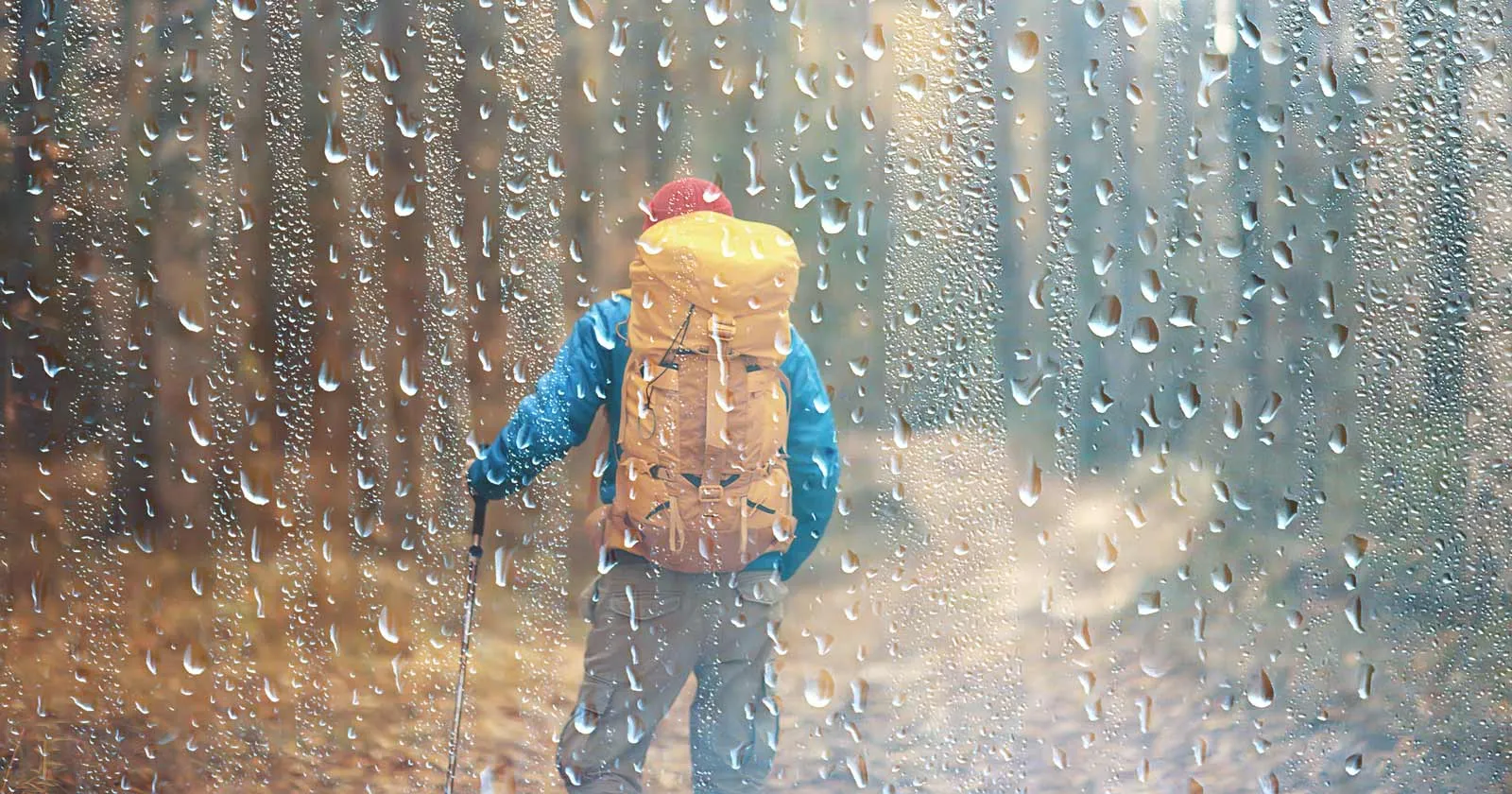If you're searching for rain safety tips for hiking that truly work, The National Park Shops is here to help. We equip hikers with the knowledge and gear needed to stay safe, dry, and confident when the weather turns wet. In this guide, you'll find practical rain safety tips for hiking that protect you from the elements and help you enjoy the trail even in rainy conditions. Whether you're a beginner or an experienced hiker, following rain safety tips for hiking can transform a gloomy day into an unforgettable outdoor adventure.?
What are the benefits of hiking in the rain?
While some hikers shy away from wet weather, learning rain safety tips for hiking opens the door to a refreshing outdoor experience. The trails are often quieter, allowing for a more peaceful connection with nature and wildlife that emerges during rain showers. Cooler temperatures also reduce fatigue, making your hike feel easier and more enjoyable. Rain can bring out vibrant colors and fresh scents, creating a sensory experience that sunny hikes simply can't match. Following rain safety tips for hiking helps you enjoy these experiences safely and confidently.
Hiking in the rain challenges your resilience and adaptability. With the right preparation, rainy hikes can improve your outdoor skills and mental strength. Here are a few key benefits to keep in mind:
-
You’ll learn to prepare for unpredictable weather and slippery paths.
-
You’ll build endurance by navigating muddy and uneven trails.
-
You'll sharpen your problem-solving and decision-making skills.
When applying rain safety tips for hiking, you can focus on the joy of the journey rather than discomfort. With the right mindset, rainy hikes become rewarding adventures that deepen your love for the outdoors.
For photographers and nature lovers, rain safety tips for hiking unlock a world of hidden beauty. You'll spot water droplets on leaves, mist-covered landscapes, and dramatic skies. Plus, wildlife is often more active during or after rainfall, giving you rare viewing opportunities. Thanks to rain safety tips for hiking, you can approach these moments prepared and safe. Embracing rainy hikes expands your appreciation of nature’s wonders.
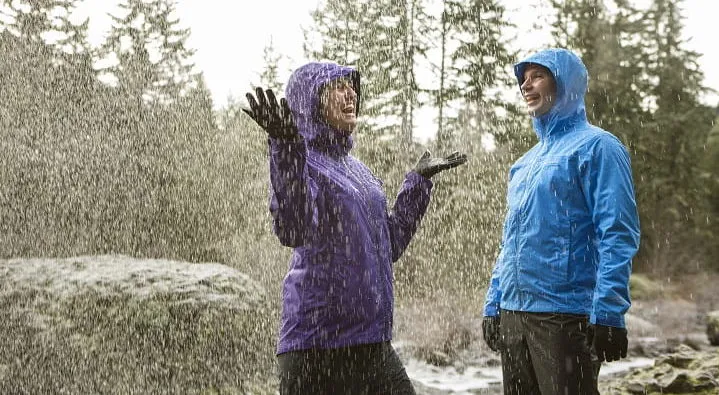
What gear do I need to hike in the rain?
Selecting the right gear is one of the most critical rain safety tips for hiking. A good setup keeps you dry, comfortable, and focused on enjoying the trail. Start with a waterproof and breathable rain jacket to stay dry without overheating. Then, wear waterproof pants and shoes to keep your lower body protected. Moisture-wicking base layers will pull sweat away from your skin and help regulate your temperature.
Your backpack should be ready for wet conditions too. Make sure it includes:
-
A rain cover or dry bags to protect electronics, snacks, and spare clothes.
-
Extra layers in case the temperature drops.
-
A hat with a brim and waterproof gloves to protect exposed skin.
-
Trekking poles to help you balance on slick trails.
Another key rain safety tip for hiking is choosing the right footwear. Wet trails are slippery, so wear durable, non-slip hiking shoes. Pair them with wool socks, which insulate even when wet, unlike cotton. Finally, pack a headlamp in case the hike takes longer due to rain and visibility drops. Following these rain safety tips for hiking ensures that bad weather doesn’t ruin your outdoor plans.
16 Rain Safety Tips for Hiking
Choose the right trail
One of the first rain safety tips for hiking is selecting a trail suited for wet conditions. Avoid trails with steep slopes, loose rocks, or narrow ridges that become dangerous when slippery. Instead, look for forested trails with well-packed paths and gentle grades. Rain safety tips for hiking suggest reviewing trail reports and weather forecasts before heading out. A safer trail choice reduces the risk of injury during rainy hikes.
Flood-prone areas and muddy meadows should also be avoided, as they can be hazardous and environmentally damaging when trampled. Use rain safety tips for hiking to select routes that are less likely to accumulate water and create hazards. If a trail becomes too dangerous during your hike, turn back or take an alternate route. Rain safety tips for hiking remind us that flexibility keeps you safe in changing conditions. Prioritize safety over scenery when choosing your rainy-day adventure.
Pack a communication device
Staying connected is essential, making this one of the most important rain safety tips for hiking. Pack a fully charged phone, GPS device, or emergency beacon in case conditions worsen or you lose your way. Rain can interfere with signals, so use rain safety tips for hiking to understand your trail’s cell coverage beforehand. Keep devices in waterproof cases or dry bags to protect them from moisture. These precautions ensure you can call for help if needed.
When hiking in remote areas, rain safety tips for hiking recommend using a satellite communicator for added security. Always share your plans with someone who can raise an alarm if you fail to return on time. Communication tools, when paired with rain safety tips for hiking, create an essential safety net. A small investment in preparation can make a huge difference in an emergency. Never underestimate the value of being reachable in the wild.
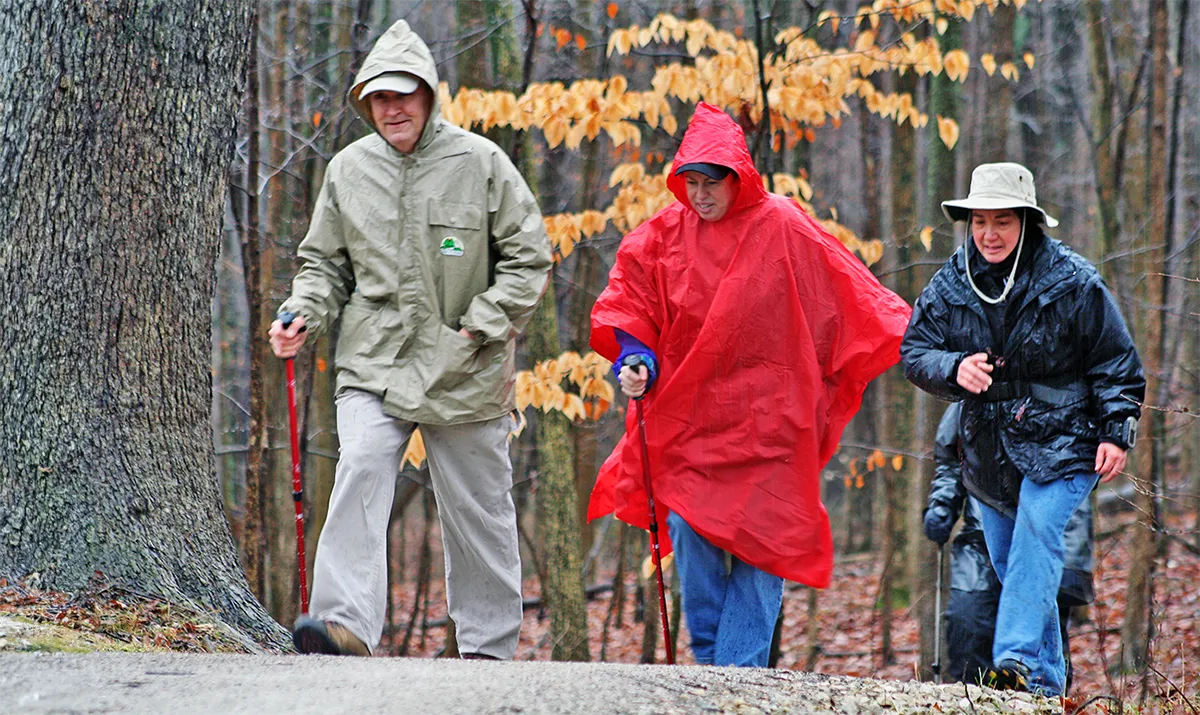
Pack easy snacks to eat
Fueling your body properly is another key element of rain safety tips for hiking. Pack snacks that are easy to eat without needing to stop for long breaks in the rain. Energy bars, dried fruit, and trail mix provide quick calories without much preparation. Rain safety tips for hiking emphasize keeping snacks in waterproof packaging to prevent spoilage. Eating regularly helps maintain your energy and body heat in wet conditions.
Avoid snacks that require cooking or extensive handling, as rain makes meal prep inconvenient and messy. Pre-portioned snacks allow you to eat on the move, applying rain safety tips for hiking to keep your hike efficient and safe. Remember to stay hydrated too, drinking water at regular intervals. Rain safety tips for hiking highlight that wet weather can mask dehydration symptoms. Eating and drinking well keeps your body fueled against cold and fatigue.
Cautiously cross creeks and streams
Water crossings require extra care, making cautious navigation a must-have in your rain safety tips for hiking. Creeks and streams can swell quickly during rain, creating strong currents that sweep hikers off their feet. Use trekking poles to test the depth and stability of the crossing. Rain safety tips for hiking remind you to unbuckle your backpack chest and waist straps before crossing in case you fall.
Look for wide, shallow areas with slow-moving water to cross safely. Rain safety tips for hiking also recommend facing upstream and moving sideways for better balance. If a crossing seems too dangerous, turn back rather than risk injury. Following rain safety tips for hiking keeps your adventure safe rather than hazardous. Always respect the power of moving water during rainy hikes.
Pack towels and extra clothes
Packing dry towels and extra clothing layers is one of the most practical rain safety tips for hiking. Even the best rain gear can sometimes let moisture seep through, making dry clothes a welcome relief. Pack items in waterproof bags to ensure they stay dry until needed. Rain safety tips for hiking suggest choosing quick-drying fabrics that won’t retain moisture.
At rest stops or when you finish your hike, use these dry clothes to prevent chills and discomfort. Changing into warm layers applies rain safety tips for hiking to help regulate your body temperature. It also reduces the risk of hypothermia in cold, wet conditions. Carrying a microfiber towel is lightweight and efficient for drying off quickly. Being prepared with dry clothing can turn a miserable hike into a manageable one.
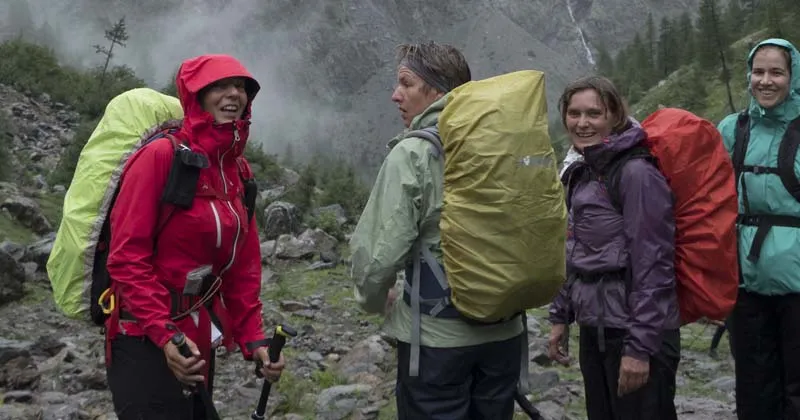
Wear a durable rain jacket
A high-quality rain jacket is one of the top rain safety tips for hiking. Choose a jacket made from breathable yet waterproof materials to keep sweat from building up inside. Look for features like sealed seams, adjustable hoods, and ventilation zippers. Rain safety tips for hiking emphasize that layering underneath your jacket is essential for comfort and insulation.
Your rain jacket should be lightweight but durable enough to handle brush and rocky terrain. Applying rain safety tips for hiking means investing in gear that withstands extended exposure to wet weather. Test your jacket on short hikes to ensure it fits well and functions properly. A dependable rain jacket will keep you dry and focused on enjoying your hike. Good gear preparation is a cornerstone of rain safety tips for hiking.
Avoid cotton and down
Selecting the right fabrics is one of the most overlooked rain safety tips for hiking. Cotton and untreated down lose their insulating properties when wet, leaving you cold and uncomfortable. Instead, choose synthetic or wool layers that retain warmth even when damp. Rain safety tips for hiking recommend checking your clothing tags and upgrading your wardrobe as needed.
Base layers should be moisture-wicking and quick-drying to keep your skin dry. Mid-layers like fleece offer warmth without absorbing water. Applying rain safety tips for hiking through smart fabric choices reduces your risk of hypothermia. Cotton may feel comfortable in dry weather but is a poor choice for rainy conditions. Make fabric selection part of your overall rain safety tips for hiking strategy.
Wear a hat with a brim
Protecting your face and eyes is an important part of rain safety tips for hiking. A hat with a brim keeps rain from dripping down your face and reduces the glare of wet conditions. Wide-brimmed hats or baseball caps paired with hoods offer double protection. Rain safety tips for hiking suggest selecting hats made from quick-drying, water-resistant materials.
In cooler weather, choose a hat that also insulates to keep your head warm. Keeping rain out of your eyes helps maintain visibility on slippery trails. Following rain safety tips for hiking with the right headwear keeps you comfortable and aware of your surroundings. A small item like a hat can significantly improve your rainy hiking experience. Don’t overlook the basics when applying rain safety tips for hiking.
Wear wool socks
Keeping your feet warm and dry is one of the simplest rain safety tips for hiking. Wool socks are the best choice because they provide insulation even when wet, unlike cotton, which traps moisture. Wool also dries faster and helps prevent blisters on long, wet hikes. Rain safety tips for hiking recommend packing an extra pair of wool socks to change into if your first pair gets soaked. With proper foot care, you'll hike more comfortably in rainy weather.
Wool socks are also breathable, which helps regulate temperature as your activity level changes. They work well with waterproof shoes to create a complete moisture barrier. Following rain safety tips for hiking with the right socks helps prevent cold feet, a common cause of discomfort. Simple gear choices like these keep you safe and focused on enjoying your hike. Don't underestimate the importance of your feet on a rainy trail.
Wear waterproof hiking pants
Staying dry is much easier when you follow rain safety tips for hiking and wear waterproof hiking pants. These pants repel water and dry quickly, protecting your legs from mud, rain, and wind. Choose breathable fabrics that won’t trap sweat underneath, allowing for better comfort on long hikes. Rain safety tips for hiking also recommend checking for features like sealed seams and adjustable cuffs to keep water out.
You can layer waterproof pants over thermal leggings in colder conditions for added warmth. When you wear the right pants, you're more likely to stay warm and dry during the hike. Following these rain safety tips for hiking helps maintain your comfort and energy levels. Wet, cold legs can quickly sap your motivation on a rainy trail. Choose pants designed for the weather to hike smarter and safer.
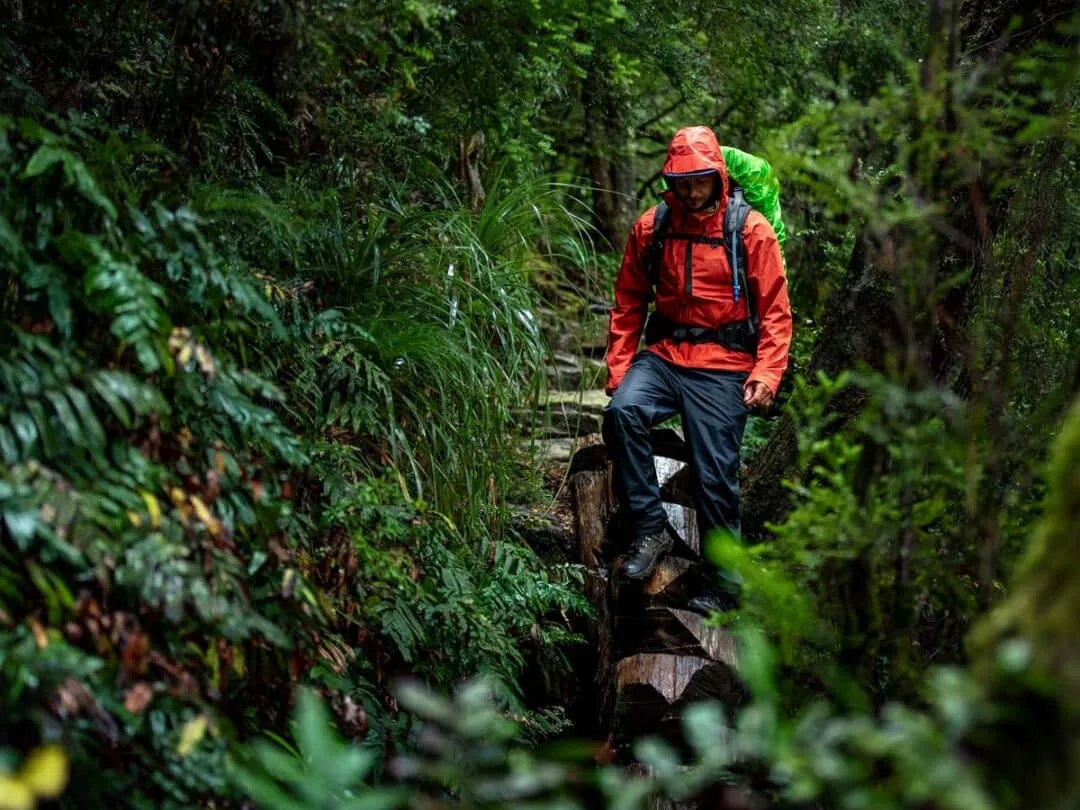
Wear waterproof hiking shoes
Footwear is crucial for rainy-day hikes, making this one of the most vital rain safety tips for hiking. Waterproof hiking shoes help keep your feet dry, reducing the chance of blisters and cold-related issues. Look for shoes with grippy soles to prevent slips on wet rocks and muddy trails. Rain safety tips for hiking highlight the need to break in your shoes before your trip to avoid discomfort.
Proper waterproof hiking shoes form the first line of defense against soggy trails. They work best when paired with moisture-wicking socks and waterproof pants. Following rain safety tips for hiking ensures your feet stay dry, improving your balance and overall comfort. Don't head out into wet weather without testing your shoes first. Good footwear keeps you moving forward safely in the rain.
Bring neoprene gloves
Cold, wet hands can quickly sap your energy, which is why neoprene gloves are essential rain safety tips for hiking. Neoprene retains warmth even when wet, providing comfort in damp conditions. Rain safety tips for hiking suggest choosing gloves that fit snugly but still allow you to grip trekking poles or gear securely. Look for reinforced palms and adjustable wrist closures to keep water out.
Wearing gloves protects your hands from windchill and abrasion on rugged trails. They're especially useful in colder, rainy climates where frostbite risk increases. Following rain safety tips for hiking with the right gloves keeps your hands functional and warm. Simple details like hand protection can make a big difference in wet weather hiking. Stay prepared from head to toe.
Use trekking poles
Maintaining your balance on slippery trails is one of the key rain safety tips for hiking. Trekking poles give you extra stability when crossing slick rocks, muddy paths, or uneven ground. Rain safety tips for hiking suggest adjusting your poles slightly shorter on uphill climbs and longer on descents. This keeps your center of gravity steady and reduces the risk of falls.
Trekking poles also help distribute your body weight more evenly, taking strain off your knees and ankles. Look for poles with rubber tips that grip better on wet surfaces. Applying rain safety tips for hiking with trekking poles helps you hike farther and safer in rainy conditions. Practice using them on shorter hikes before tackling harder trails. Stability tools like trekking poles are essential in wet weather.
Bring a headlamp
Reduced visibility is common during rainy hikes, making a headlamp one of the most practical rain safety tips for hiking. Overcast skies, dense forests, or sudden fog can quickly darken the trail. Pack a waterproof headlamp with fresh batteries to light your path when natural light fades. Rain safety tips for hiking recommend testing your headlamp before every trip.
Wearing a headlamp keeps your hands free for trekking poles or navigating difficult sections. Choose a model with multiple brightness settings for flexibility in changing conditions. Following rain safety tips for hiking with the right lighting prevents accidents and keeps you on course. Even if you plan a short hike, always pack a light source. Preparedness is key for rainy hikes.
Pack a first-aid kit
In wet weather, minor injuries can escalate quickly without proper care, making a first-aid kit essential for rain safety tips for hiking. Include waterproof bandages, blister treatments, antiseptic wipes, and pain relievers. Rain safety tips for hiking suggest packing your kit in a dry bag to keep contents usable.
A well-stocked first-aid kit allows you to handle small emergencies without cutting your hike short. Check your kit before each trip and replace any expired items. Following rain safety tips for hiking with a first-aid kit provides peace of mind in unpredictable weather. Having supplies close at hand lets you respond quickly and confidently. Safety on rainy hikes starts with preparation.
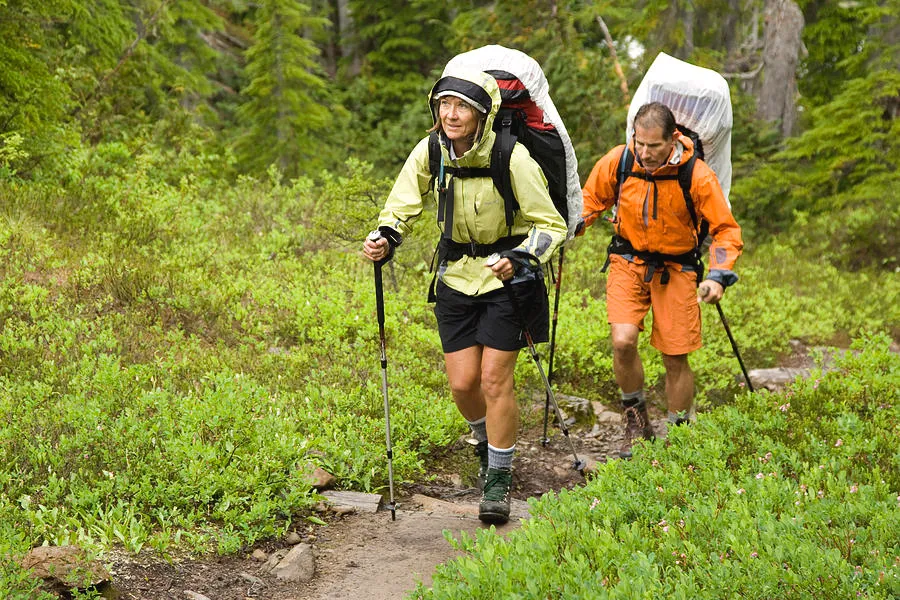
Notice the upsides of rainy hikes
Finally, one of the most uplifting rain safety tips for hiking is to notice the beauty that rain brings to the trail. Fresh scents, vibrant plant life, and peaceful surroundings make rainy hikes special. Use your senses to enjoy the moment rather than focus on the discomfort. Rain safety tips for hiking remind you that hiking is as much about the journey as the destination.
Watch for wildlife that becomes active in the rain, and take time to appreciate how the landscape changes. Quiet trails offer a calm, meditative atmosphere that you rarely find on sunny days. Following rain safety tips for hiking helps you stay safe while enjoying these unique moments. With preparation and an open mind, rainy hikes can be some of the most memorable adventures you'll have.
Conclusion
Mastering rain safety tips for hiking ensures that wet weather never ruins your outdoor plans. With the right preparation, hiking in the rain becomes a rewarding experience instead of a struggle. Always remember that the outdoors is unpredictable, and preparation is your best defense. Rain safety tips for hiking empower you to enjoy nature’s beauty in all weather conditions. The next time clouds roll in, you’ll be ready to embrace the rain rather than avoid it. Let The National Park Shops help you gear up and learn the essential rain safety tips for hiking, so you can focus on the adventure ahead. With these tips in mind, every hike can be a safe and memorable one, rain or shine.

